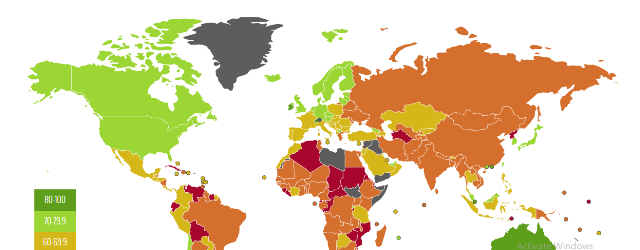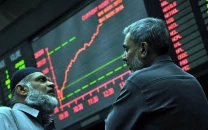Minor improvement in Pakistan’s ranking on Economic Freedom Index
Judicial effectiveness is one of the major contributing factors to improved ranking

The country's score has improved by 0.6, with an overall score of 55.0— making the country's economy the 131st freest in the 2019 Index. Pakistan is ranked 32nd among 43 countries in the Asia–Pacific region.
The report attributed growth to “judicial effectiveness and property rights outpacing declines in monetary freedom and fiscal health”.
It further states that although some aspects of economic freedom have advanced modestly in recent years, decades of internal political disputes and low levels of foreign investment have led to erratic growth and underdevelopment.
“Excessive state involvement in the economy and inefficient but omnipresent regulatory agencies inhibit private business formation,” it added.
The report also cites "lack of access to bank credit undermines entrepreneurship, and the financial sector’s isolation from the outside world slows innovation" as a reason for the slow growth.
Judicial system
Speaking of the other contributing factors, the report maintains that the judicial system suffers backlog and poor security, while corruption continues to taint the judiciary and civil service.
Protection of property rights, the report states, is still weak. It also adds that despite being independent the judiciary is still subject to influence from extremist groups and high-ranking political officials.
The courts are said to be “slow, outdated, and inefficient”.
“Corruption, including bribery, extortion, cronyism, nepotism, patronage, graft, and embezzlement, is so pervasive in politics, government, and law enforcement that the public has come to regard it as normal,” the report added.
Economy
The index states that the tax system is complex despite reforms to cut rates and broaden the tax base.
“The top personal income tax rate is 30 per cent, and the top corporate tax rate has been cut to 30 per cent. The overall tax burden equals 12.4 per cent of total domestic income. Over the past three years, government spending has amounted to 20.3 per cent of the country’s GDP, and budget deficits have averaged 5.1 per cent of GDP. Public debt has risen to 67.2 per cent of GDP,” the report adds.
Business
The report also praised Pakistan for its ‘modest’ improvement in the entrepreneurial environment saying that the cost of completing licensing requirements is still burdensome.
“A large portion of the workforce is underemployed in the informal sector,” it said.
It further added that the government’s 2018–2019 budget increased spending on subsidies for the construction sector and for such items as food (especially sugar), power, water, and textiles by 36 per cent.
Exports and imports
The combined value of exports and imports is 25.8 per cent of the GDP while the average applied tariff rate is 10.1 per cent.
As of June 30, 2018, according to the WTO, Pakistan had 66 nontariff measures in force.
“Excessive state involvement in the economy and restrictions on foreign investment are serious drags on economic dynamism,” it reasoned.



















COMMENTS
Comments are moderated and generally will be posted if they are on-topic and not abusive.
For more information, please see our Comments FAQ